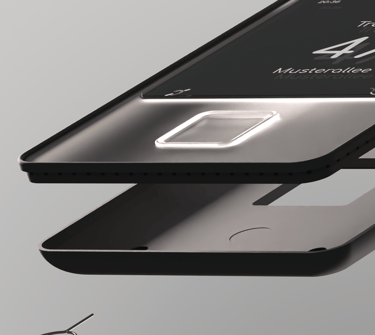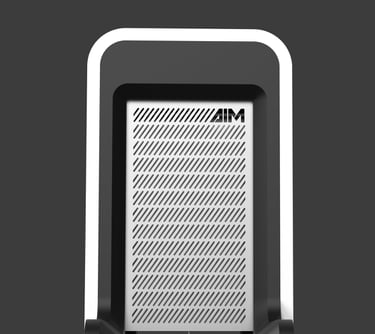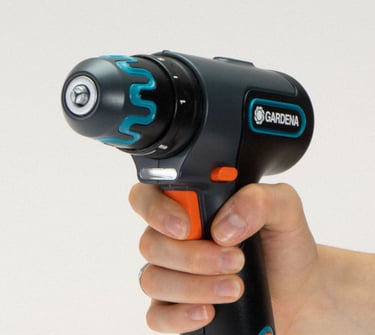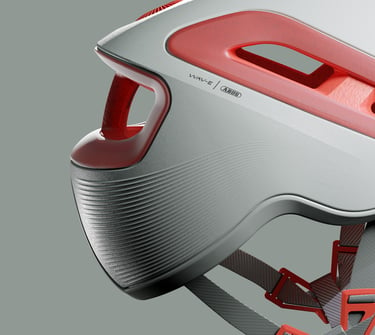
Inhalation System
Industrial Design | Medical Design | Concept Design
Breath well
This project was developed as a student project and not behalf of any company mentioned
Work in progress


Nasal Cavity
Breathing is essential for the body's oxygen supply, with around 20,000 breaths a day. The anatomical structure of the lungs, comparable to an upside-down tree, plays a decisive role in inhalation therapy. Branching of the airways and the particle size of the aerosol influence the deposition of medication in the alveoli.
Inhalation therapy is intended to transport the dose of medication efficiently into the bronchial tubes in order to reduce inflammation and facilitate breathing.
Effective Area
Pharynx
Trachea
Bronchi
Bronchioles
Aveoli


Particle Size
The finest aerosol particles (<5 µm) are necessary to reach the deep alveoli.
Medication
Factors influencing therapy effectiveness
Continuous Therapy
Breathing Volume
Breathing Technique
Breathing Flow
On-Demand Medication
Short-acting bronchodilators for rapid relief of acute symptoms.
Anti-inflammatory cortisone preparations or long-acting bronchodilators.
An upright posture, even inhalation and holding your breath promote the effectiveness of the therapy.
The respiratory volume describes the amount of air that is taken into the lungs per breath.
The respiratory flow describes the inhalation and exhalation cycle.










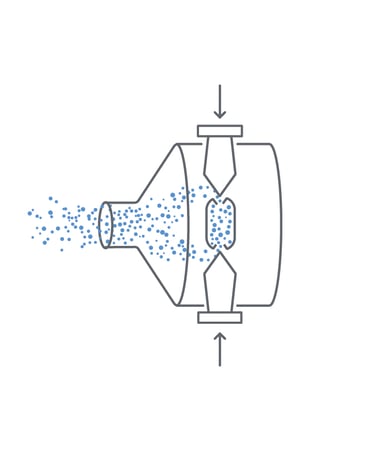

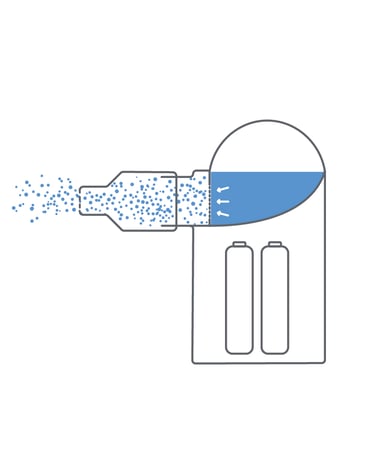

Dry Powder Inhaler
Nebulizer
Advantages: Compact, portable, and more affordable. Each dose is precisely delivered per spray.
Disadvantages: Proper use requires specific instructions and controlled breathing techniques.
Advantages: Easier to use as no special breathing techniques are required, making them ideal for children.
Disadvantages: Longer application times (5–15 minutes) and larger size, limiting portability.
Inhalation systems are primarily categorized into inhalers and nebulizers, both designed to deliver medication to the respiratory system.
Decades of innovation have led to various inhalation systems, tailored to different materials and patient needs. The three main categories of systems include:
Metered-Dose Inhalers (MDIs)
Dry Powder Inhalers (DPIs)
Nebulizers
Technique
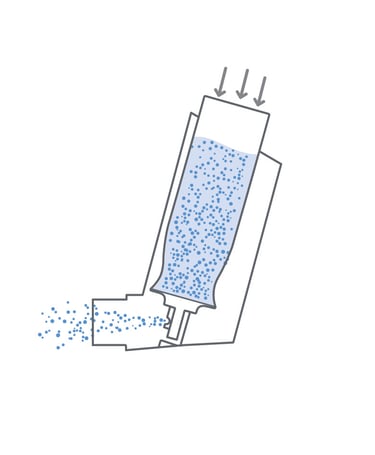

Advantages: Compact, portable, and more affordable. Each dose is precisely delivered per spray.
Disadvantages: Proper use requires specific instructions and controlled breathing techniques.
Meter Dose Inhaler
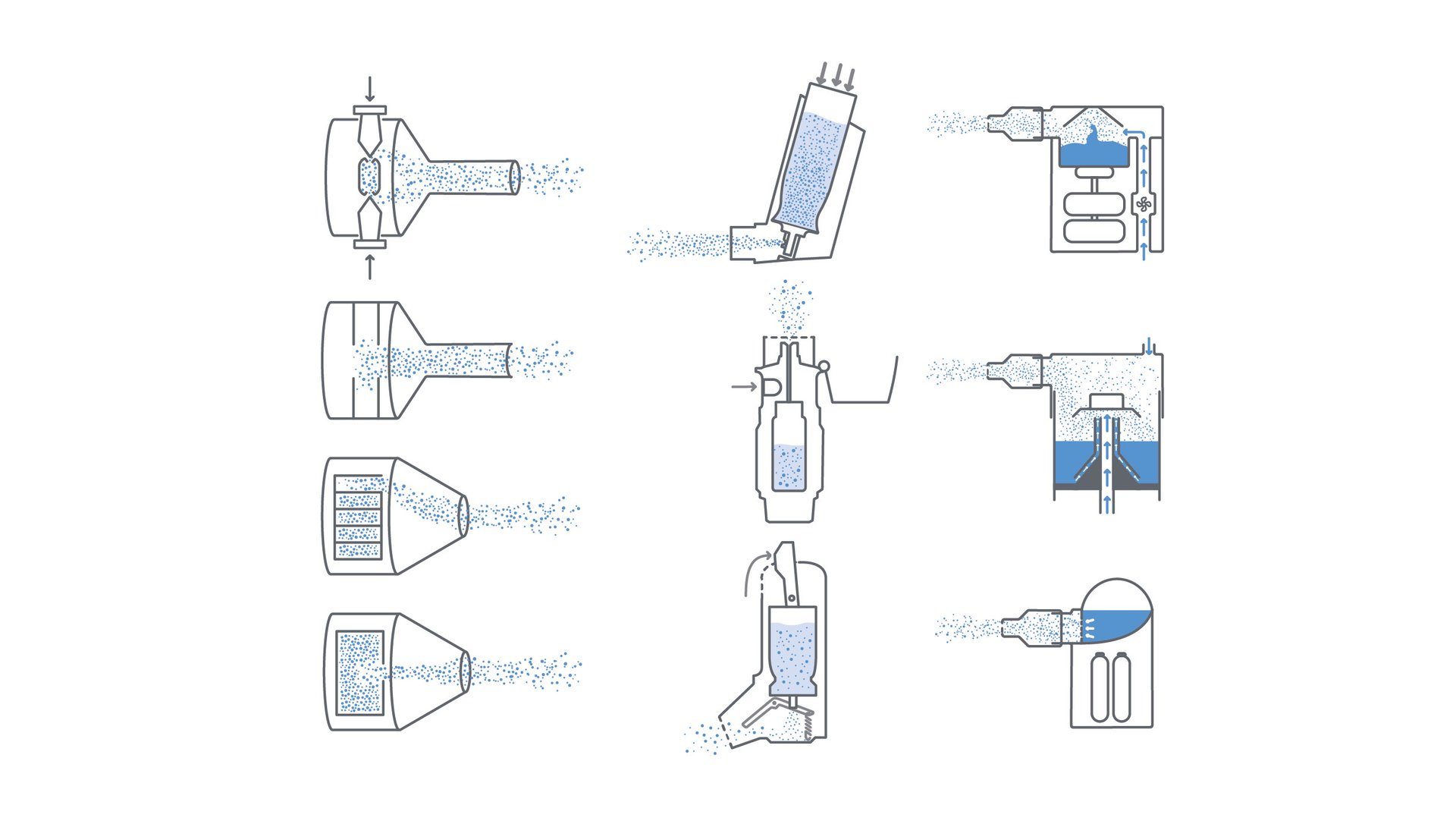
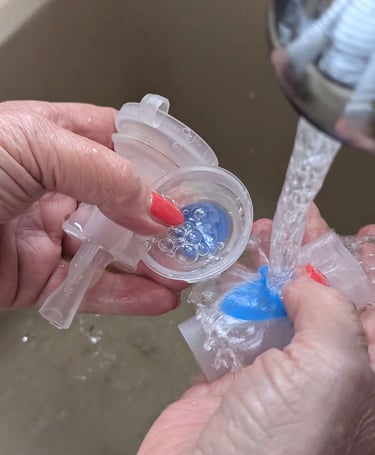

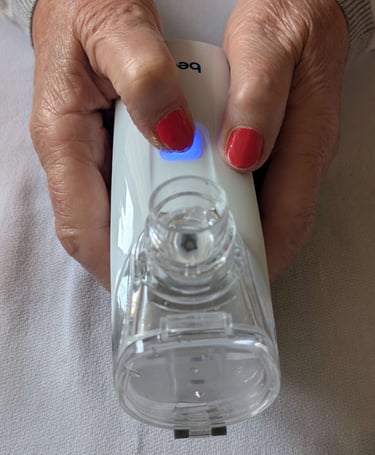

Rinse components
Self-cleaning feature
Each component must be cleaned under fresh running water after use.
Some devices use a self-cleaning funktion, but
Careful hygiene is particularly important when it comes to inhalation systems. An easy and quick cleaning process is essential to ensure long and safe use.
The Challenge
Product Analysis


The VP-M11 nebulizer by Vapo Healthy Breath was examined for its technical design and material composition. The device has a compact and straightforward basic design. The base for the main body is a rounded rectangle with slightly overlapping surfaces. The size ratio of the control unit and medication container is in the golden ratio. Control elements such as the on/off button are highlighted in color and are made of a silicone material. The medication container is made of transparent plastic. All other parts, such as the control unit and locking mechanism, are presumably made of ABS plastic. The material thickness varies from 1.7 mm for the control unit to 2.2 mm for the medication container.

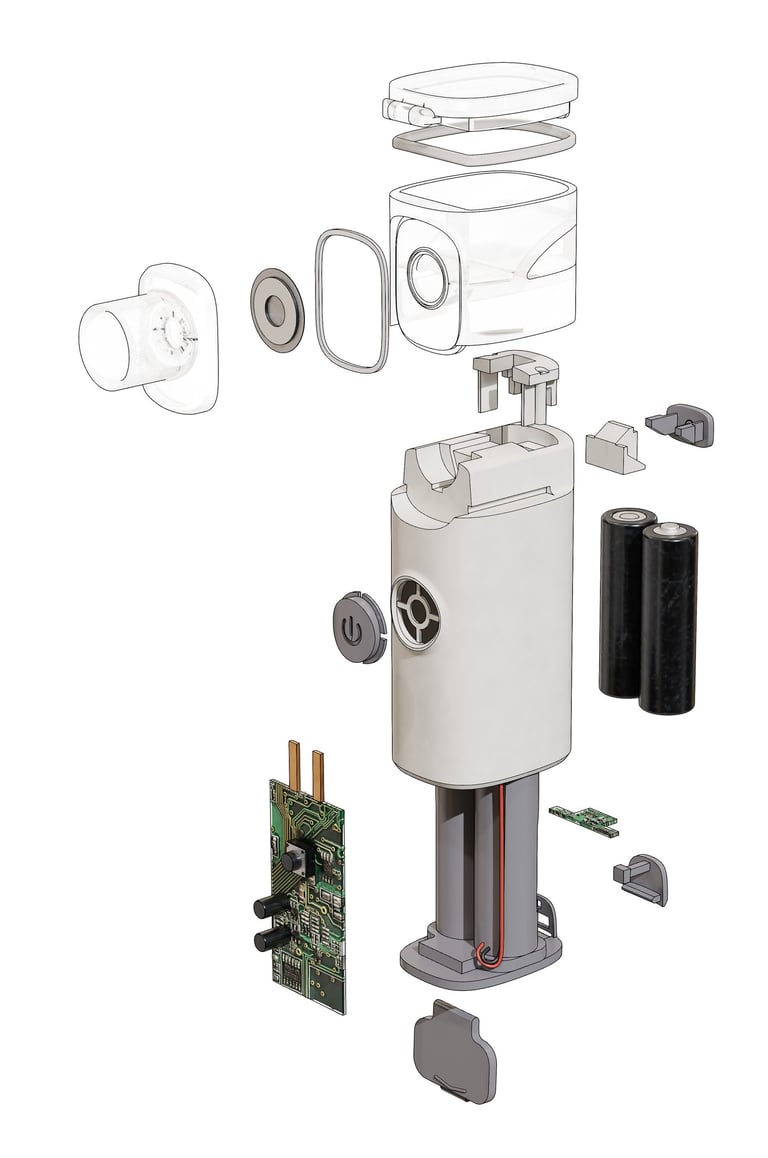

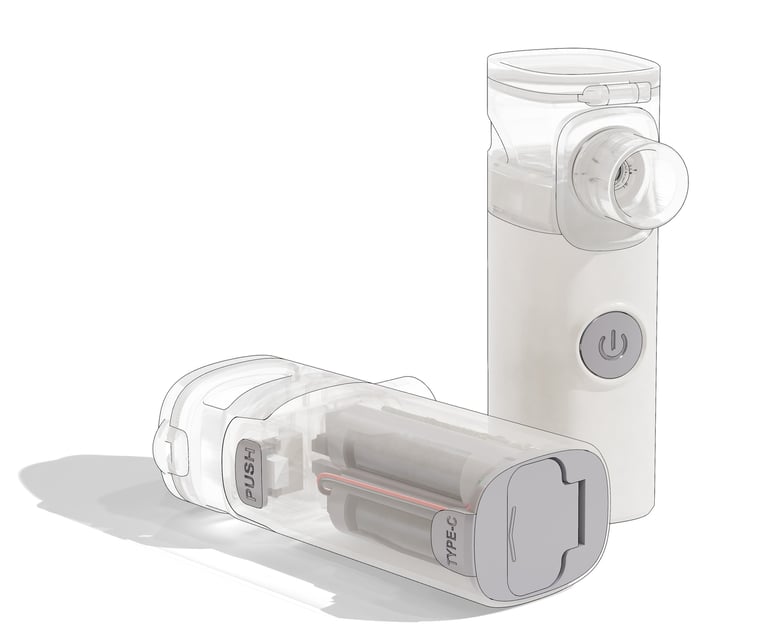

Ambient Noise Level
≤0,25 ml/min
≤3 µm
67 €
77 g
10,5cm | 3,5cm | 6,5cm





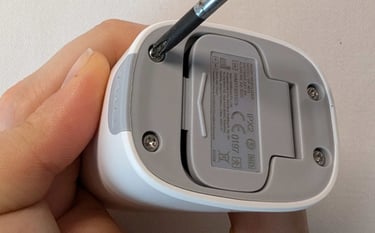

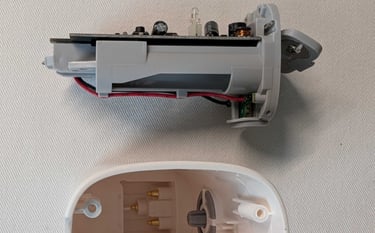

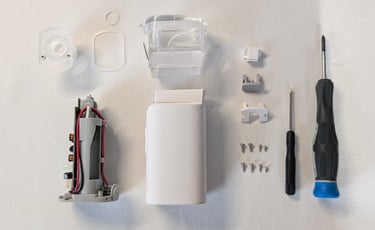

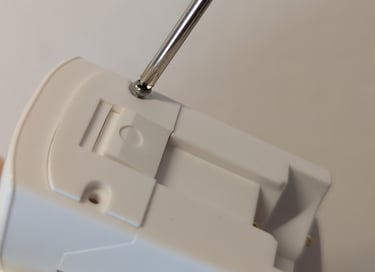

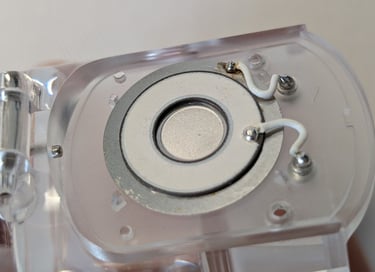

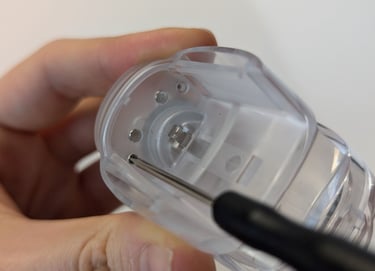

Two small screws must be loosened to access the aerosol generator plate.
Unscrewing the Aerosol Generator
Aerosol Generator Connection
The perforated plate is firmly soldered to the electrical connections.
All individual components and the tools required for disassembly.
The battery compartment occupies the largest space within the control unit.
To access the electronics, four small screws need to be removed.
The medication container is secured by a latch hook system. It can be released using a small screwdriver.
Unscrewing the Latch Hook
Assembly
Electronics
Unscrewing the Electronics
Small Screwdriver
Difficult to access, making replacement challenging.
Replacement is only possible by disconnecting the solder joint, where oxidation may occur.

Individual components could potentially be replaced easily
Plastic may wear down over time.
A larger screwdriver is needed compared to before.
Seals Near the Aerosol Generator
Two different screwdriver sizes are required.
The component takes up a lot of space
It is difficult to reassemble properly.









Market Analysis
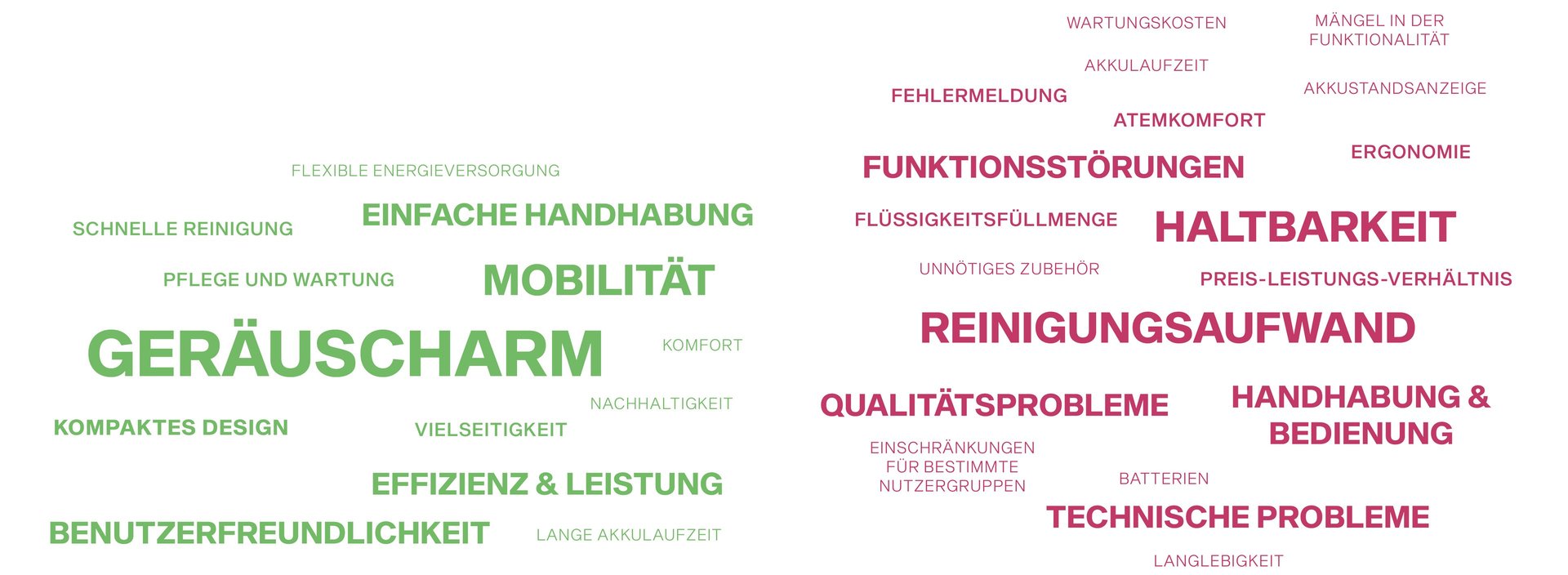
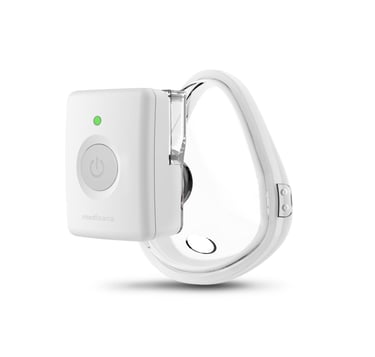

Weight
Price
MMAD
Most devices are in a similar weight range. Only the IN 700 model from Medisana stands out due to its hands-free concept.
This shows a clearer division into a more cost-intensive and a less expensive segment. The smaller and compact appliances tend to be in the cheaper range.
This shows a clearer division into a more cost-intensive and a less expensive segment. The smaller and compact appliances tend to be in the cheaper range.
Comparison of Mesh Nebulizers
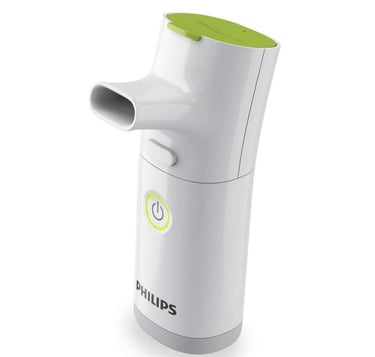

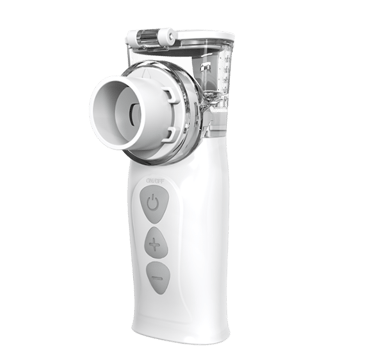

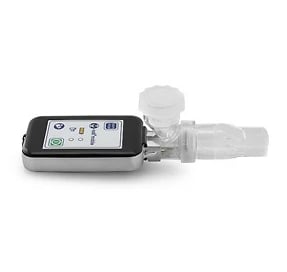

According to the operating instructions, the M-Neb achieves the highest flow rate, which makes it efficient to use.
Nebulization Rate


User Reviews
Surveys were created and online reviews were assessed as part of the market analysis. The keywords listed here refer to reviews of mesh nebulizers. This indicates an increased need for improvement in cleaning.
There are already many mobile variants in this category, but the problem of professional cleaning is often not taken into account.




Price in Euro
Wight in grams
MMAD in micrometers
Nebulization rate in ml/min






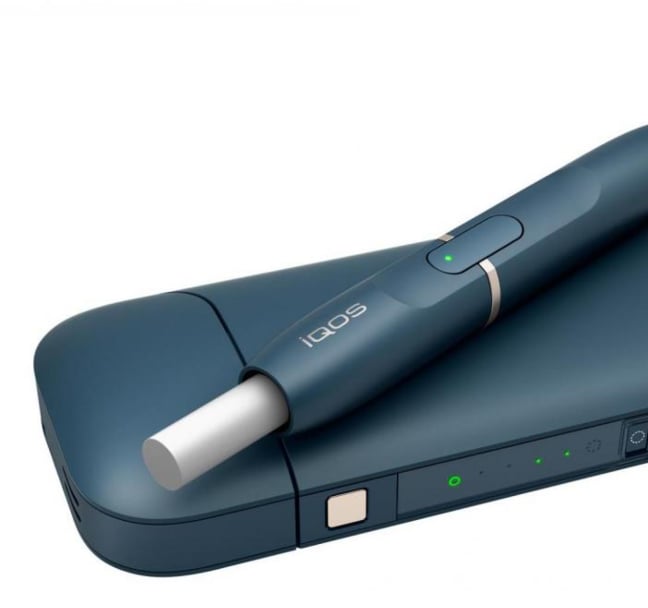

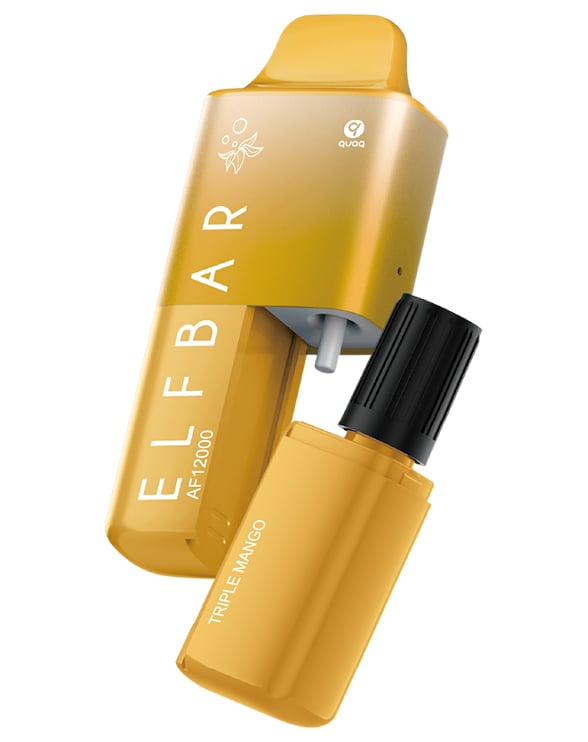


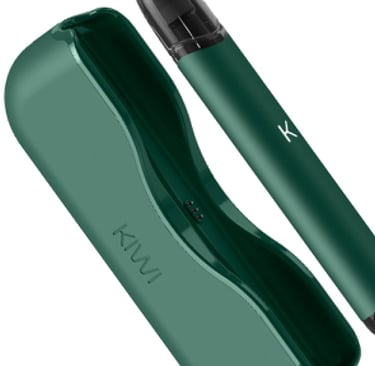
The design trend emphasizes sleek, discreet aesthetics that integrate seamlessly into daily life. Similarly, the future of inhalation devices lies in overcoming the stigma of being purely medical products, offering aesthetically pleasing, user-friendly solutions that patients rely on and enjoy using.
Analogies and Trends

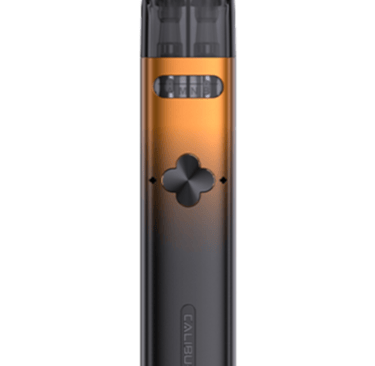
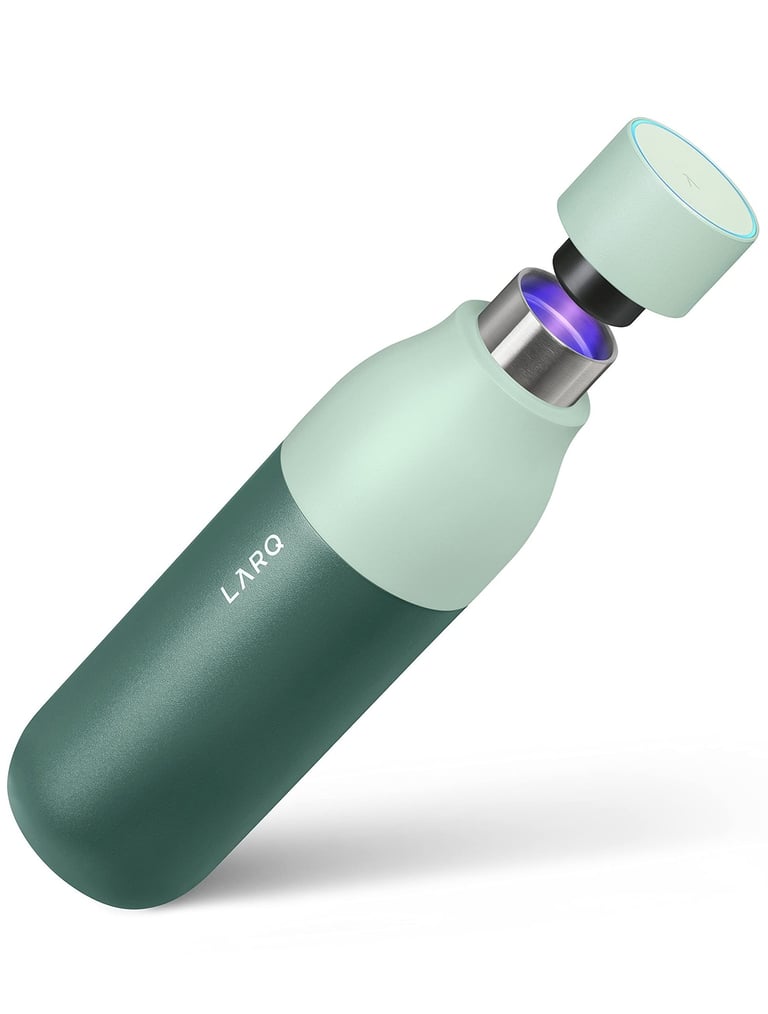

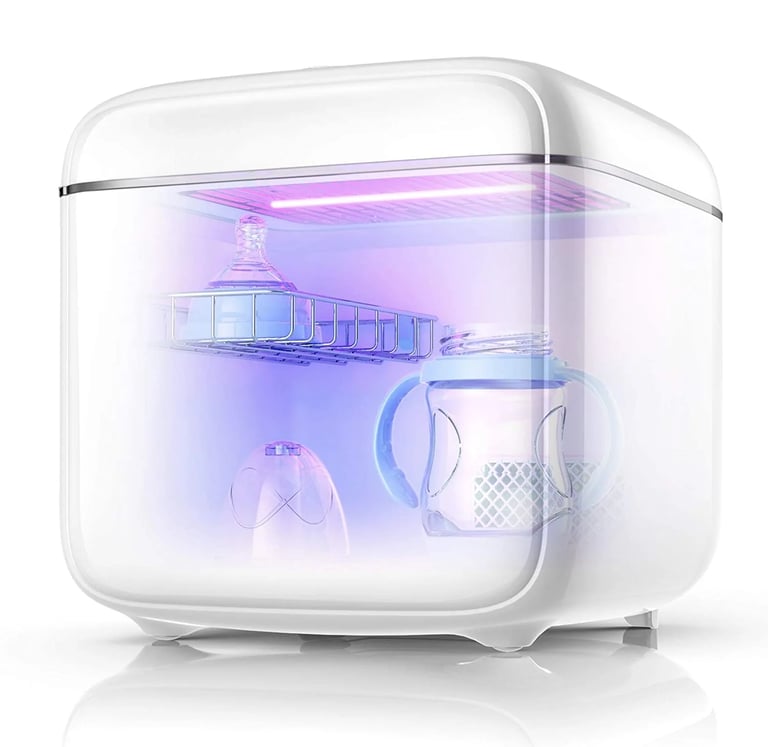

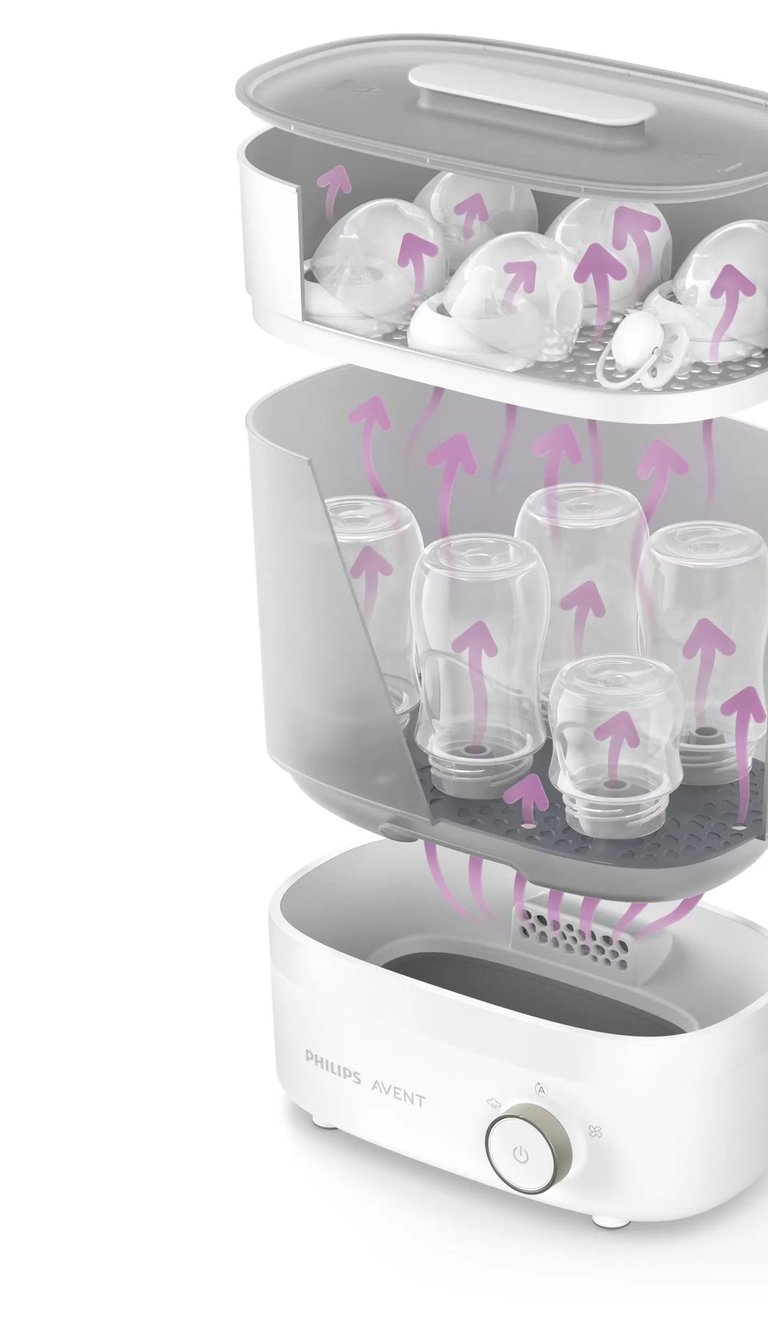

Effective cleaning is essential for inhalation systems, as components like mesh nebulizers, medication containers, and aerosol generators come into frequent contact with liquids and users. Current cleaning methods often focus on specialized solutions for mesh membranes, including integrated cleaning functions or dedicated devices. For sterilizing medication containers and mouthpieces, boiling water is a common approach, though it carries risks such as material damage or incomplete sterilization.
Technologies from related fields, like baby bottle sterilizers, offer valuable insights into improving cleaning and disinfection processes for inhalation systems. UV light and hot steam systems, in particular, could enhance hygiene and maintenance by effectively eliminating viruses and bacteria.
Analogies and Trends
Target Group Analysis

Place of Use
Inhalation Devices
Diseases
The diagrams also show a similar trend for the place of use. Inhalation is predominantly used at home, followed by use on the move or when traveling. Inhalation is used less frequently at work.
Interestingly, the participants in the online survey do not use dry powder inhalers (DPI) or metered dose inhalers (MDI), while nebulizers are equally common. In contrast, there is a clear trend towards the use of MDI devices in doctors' consultations.
The online survey addressed various illnesses. Most of the respondents use an inhaler in connection with a cold, while patients from the doctor's surgery mainly use inhalers to treat asthma.
User Survey & Insights






In terms of frequency of use, a clear trend can be seen in both groups: In both the online survey and the questionnaire, the devices are used daily.
Frequency of Use
As part of this work, an online survey was conducted with 11 participants, most of whom were aged 18 to 50. Notably, over 70% of respondents were women.
Additionally, a questionnaire was distributed at the pulmonology practice of Dr. Holtermann. The respondents, primarily aged 50 to over 70, included a two-thirds majority of women.
Both the online survey and the patient questionnaire aimed to analyze the diverse needs and challenges faced by patients in the context of inhalation therapy.






When it comes to the question of how the inhalers are stored, two directions can be identified. Devices are either stored unpackaged or packaged. Participants who prefer packaged storage often use Tupperware as containers.
There is a difference in how the devices are stored. While the devices in the online survey are more often stored in the living room or in cupboards, patients from doctors' surgeries mainly store their inhalers in the kitchen or bathroom.
How to Store
Where to Store






Cleaning Kit
Challenges
Difficulties in the Application
Patients at the doctor's office mainly use MDI or DPI devices, which are often designed as disposable devices and require manageable cleaning. Therefore, there is no increased need for a cleaning set among the respondents. In contrast, the online survey shows a clear preference for such a set, as nebulizers are used more frequently there.
Particularly with nebulizer systems, the participants in the online survey emphasized that mobility and increased time expenditure are further difficulties.
Cleaning the appliances is generally perceived as a challenge.




Digitization
Utilization Reminder
Linking inhalation devices with an app or similar digital tools met with little interest from most participants. It is noteworthy that even the younger respondents in the online survey were sceptical about digitalization.
The participants in the online survey were undecided about the possibility of a reminder function, but tended to agree that such a function could be helpful. In contrast, patients at the doctor's surgery do not see any need for it.

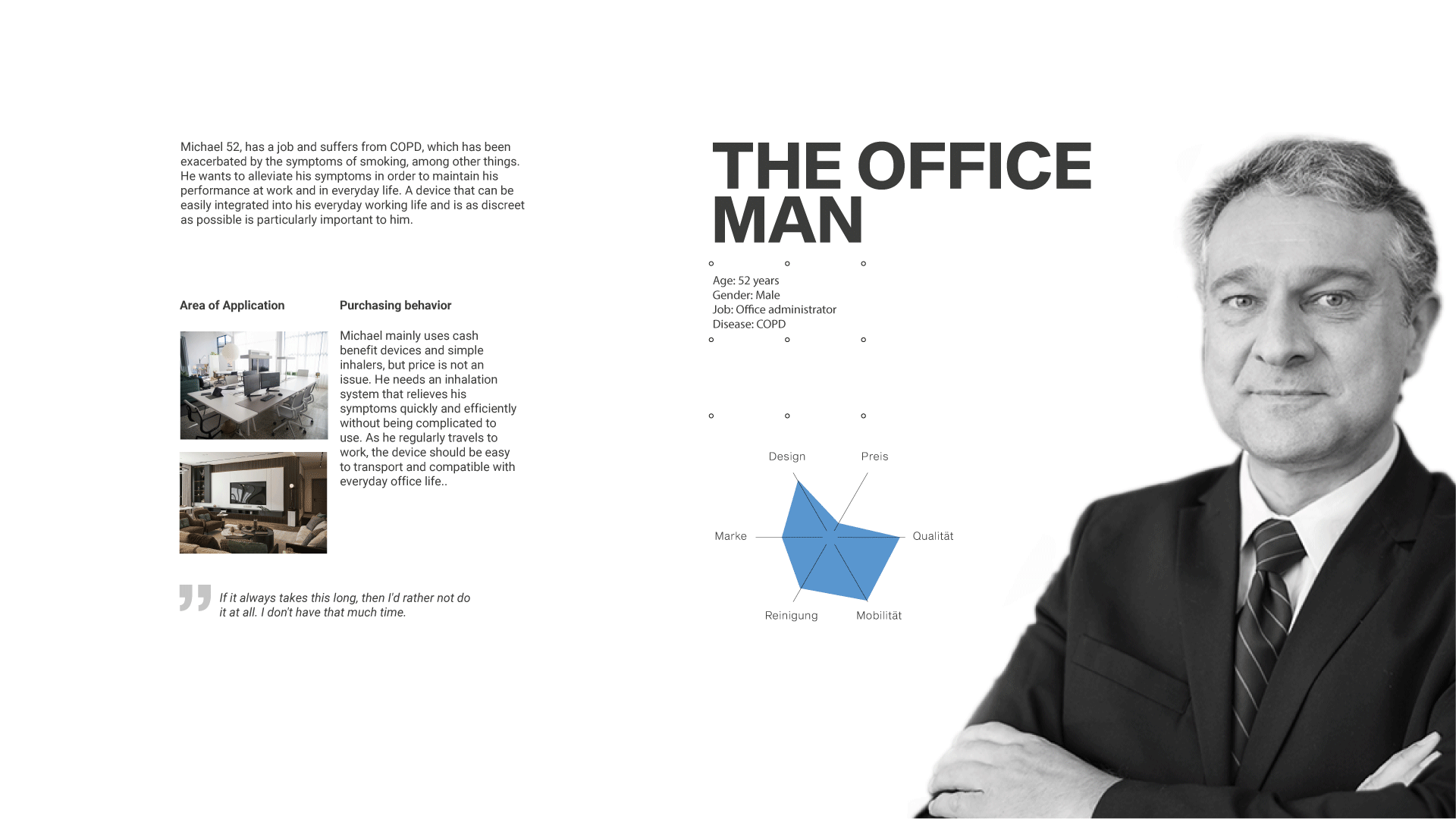

Concept Development

Potential Fields
All potentials identified to date are organized into so-called potential maps. This involves formulating a problem for a potential and then summarizing and categorizing it in this chapter and making an initial assessment of its importance and feasibility. The three stars represent the innovation content of the potentials. The potentials are divided into the following fields:
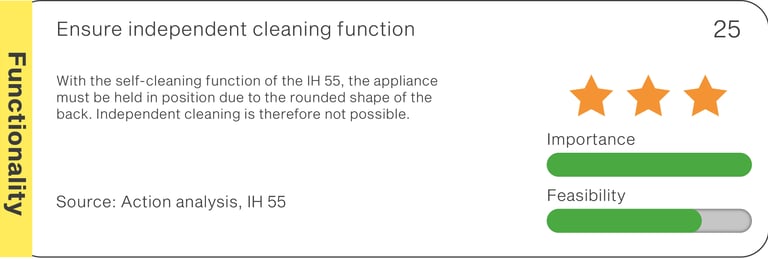

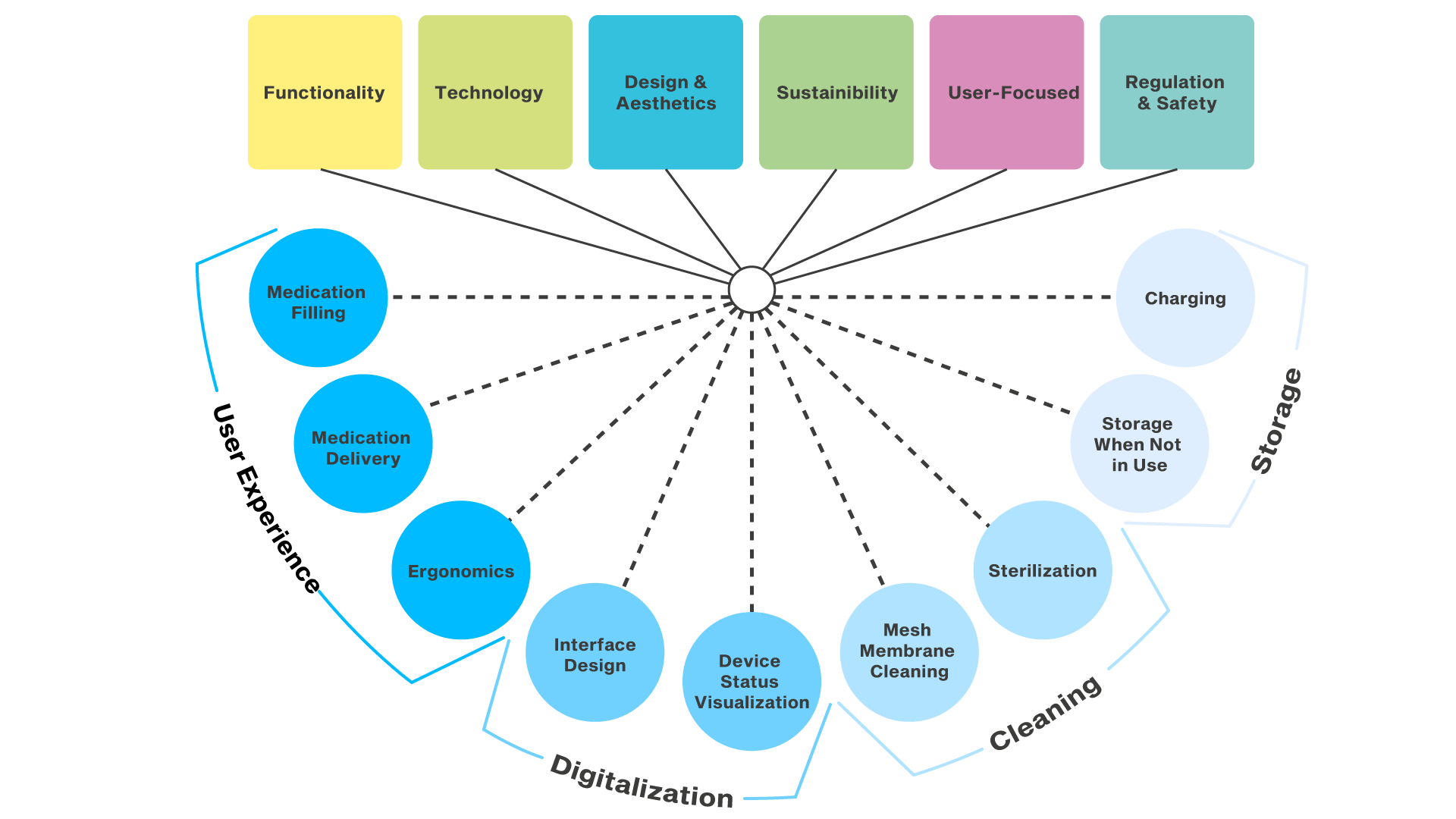

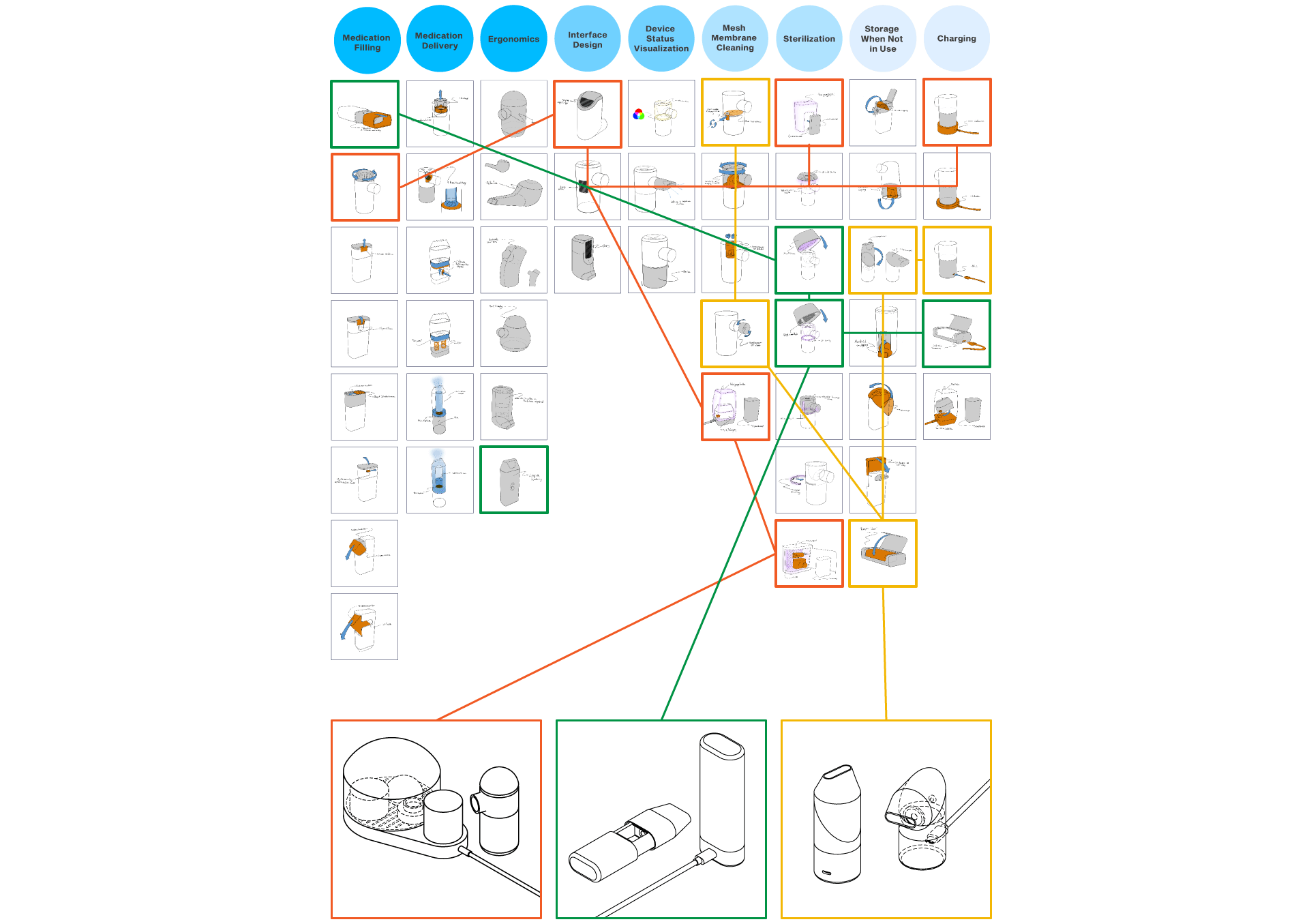

Design Concept 01
Design Concept 03
Design Concept 02
02
Design Concept
The second design concept has a horizontal structure. The medication container is opened by pulling on the mouthpiece. For sterilization, the device can be placed in a specially designed cleaning device. The hood is equipped with UV LEDs that kill germs and bacteria. The cleaning device can also be used as a charging station and transport box.
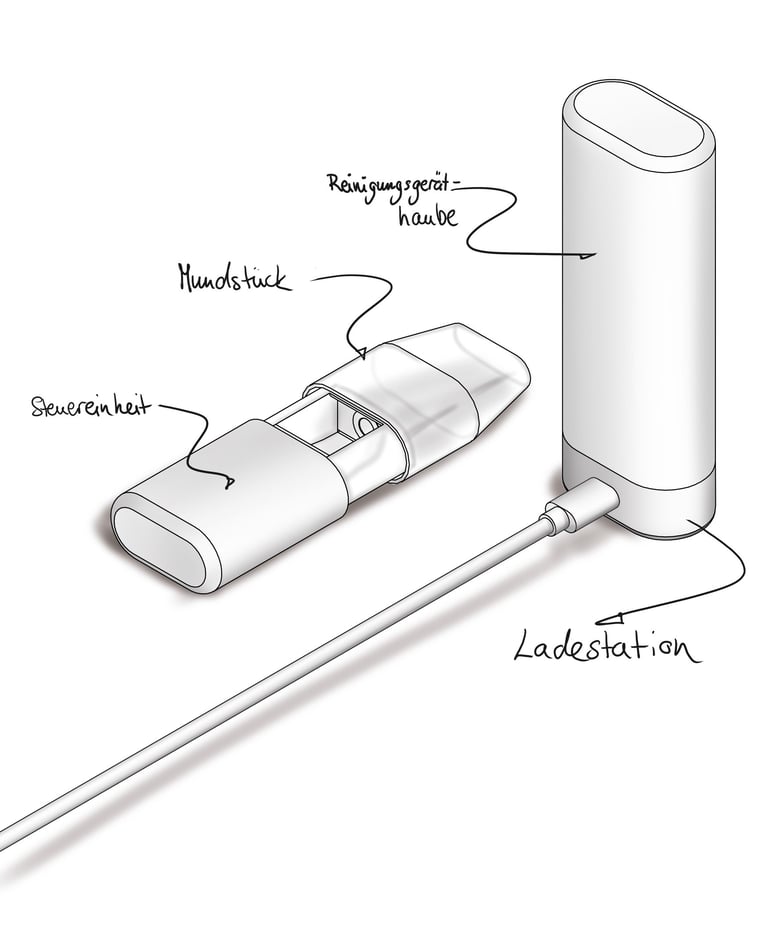

Design Outlook
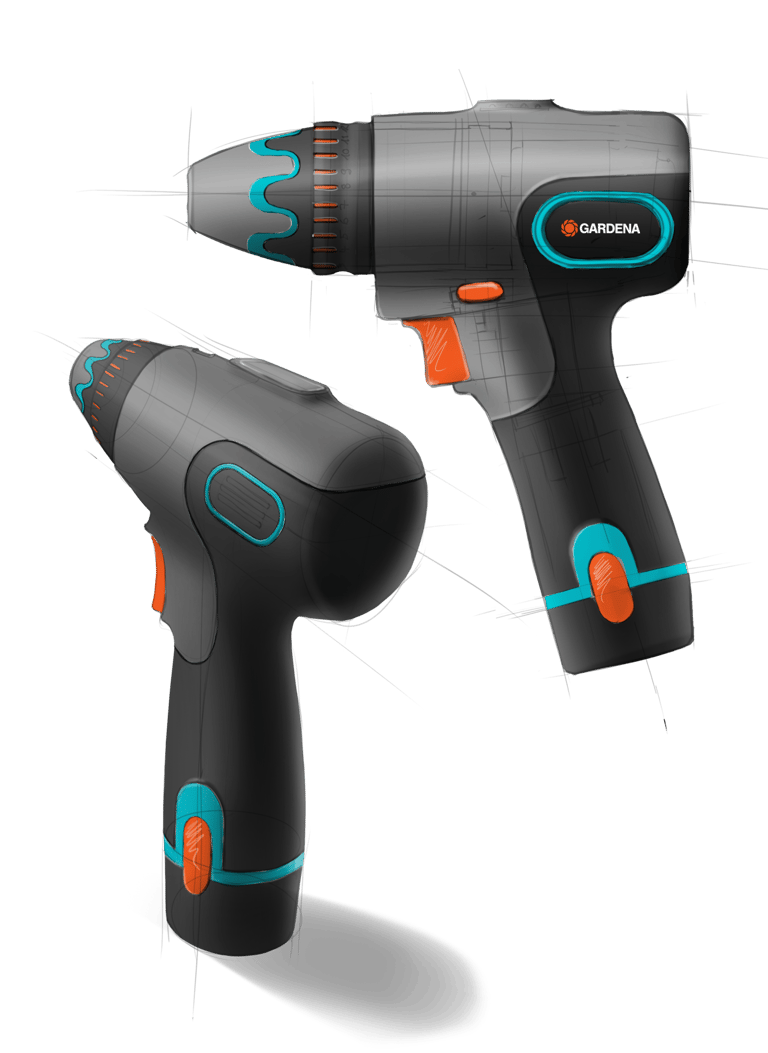

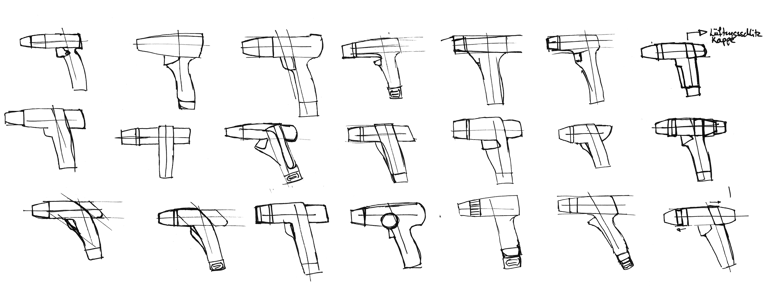

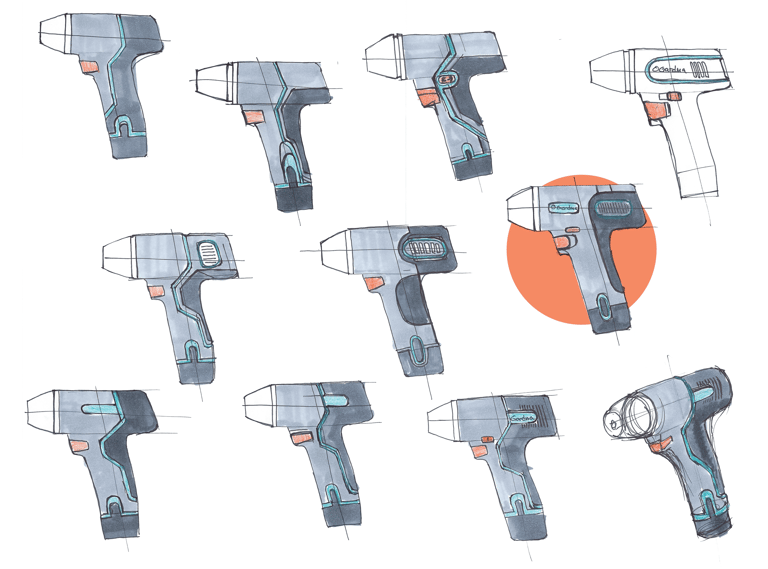

Trautwein Design | Industrial Design
Jewelery Design | Portfolio
+49 1738 173798
Wuppertal, Germany
trautwsl@mail.uc.edu
Copyright © 2023 Sarah Trautwein
All Rights Reserved

